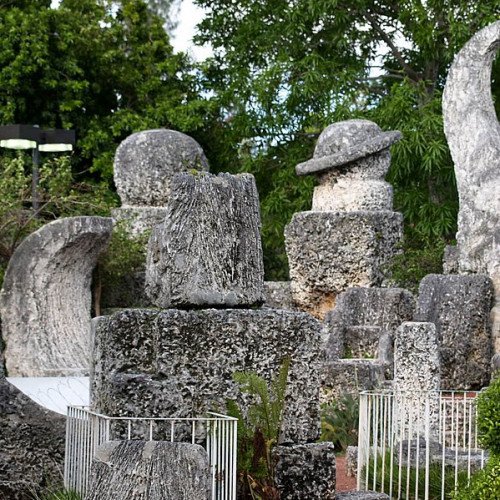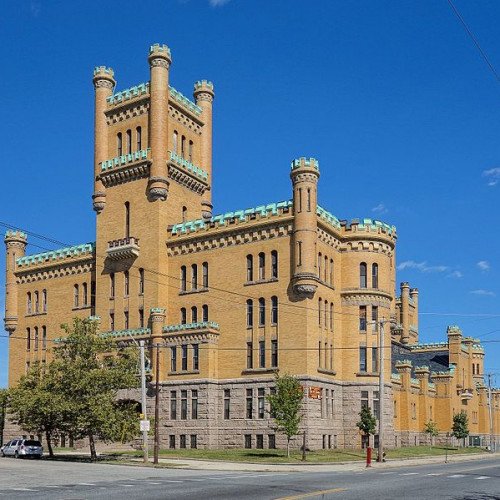Castles of "United States" CORAL CASTLE vs CRANSTON STREET ARMORY

CORAL CASTLE
Coral Castle is an oolite limestone structure created by the Latvian-American eccentric Edward Leedskalnin (1887–1951). It is located in unincorporated territory of Miami-Dade County, Florida, between the cities of Homestead and Leisure City. The structure comprises numerous megalithic stones, mostly limestone formed from coral, each weighing several tons. It is currently a privately operated tourist attraction. Coral Castle is noted for legends surrounding its creation that claim it was built single-handedly by Leedskalnin using reverse magnetism or supernatural abilities to move and carve numerous stones, each weighing many tons. Coral Castle's own promotional material says Edward Leedskalnin was 26 years old when he was suddenly rejected by his 16-year-old fiancée Agnes Skuvst in Latvia, just one day before the wedding. Leaving for the United States, he came down with allegedly terminal tuberculosis, but spontaneously healed, stating that magnets had some effect on his disease. He spent more than 28 years building Coral Castle, refusing to allow anyone to view him while he worked. A few teenagers claimed to have witnessed his work, reporting that he had caused the blocks of coral to move like hydrogen balloons. The only advanced tool that Leedskalnin spoke of using was a "perpetual motion holder". Leedskalnin originally built a castle, which he named "Ed's Place", in Florida City, Florida, around 1923. He purchased the land from Ruben Moser whose wife had assisted him when he had another very bad case of tuberculosis. Florida City, which borders the Everglades, is the southernmost city in the United States that is not on an island. At the time, it was an extremely remote location with very little development. The castle remained in Florida City until about 1936 when Leedskalnin decided to move and take the castle with him. Its second and final location has the mailing address of 28655 South Dixie Highway, Miami, FL 33033, which now appears within the census-generated overlay of Leisure City but which is actually unincorporated county territory. He reportedly chose relocation as a means to protect his privacy when discussion about developing land in the original area of the castle started. He spent three years moving the component structures of Coral Castle 10 miles (16 km) north from Florida City to its current location outside Homestead, Florida.
Statistics for this Xoptio

CRANSTON STREET ARMORY
The Cranston Street Armory is an historic building in the Broadway–Armory Historic District of Providence, Rhode Island. It was built in 1907 at a cost of $650,000.00. The building was occupied by the Rhode Island National Guard from its opening until 1996. Since then, parts of the building have been used as film studios, and some of its offices occupied by the Rhode Island State Fire Marshal. The National Trust for Historic Preservation listed the Armory as one of "America's 11 Most Endangered Historic Places" in its annual list for 1997. Its distinctive yellow bricks, crenellated turrets, and decorative stonework mark it as a historically significant building and neighborhood icon. The architects were William R. Walker & Son and the builder was Michael J. Houlihan. The armory was built with a steel-truss frame, with a large open central hall and two towers with a total of 165,000 square feet (15,300 m2) of space. The main hall alone is as wide as two football fields. After World War I, the armory was used by 243rd Coast Artillery, 103rd Field Artillery Brigade, and in later years by the 43rd and 118th as well. The films Outside Providence (1999) and Underdog (2007) were filmed using the open areas within the Armory for bluescreen work, as well as exterior shots of adjacent areas. The Armory was used for several years by the Rhode Island Interscholastic League to host indoor track and field meets including the Rhode Island state championships and the Brown Invitational track meet.